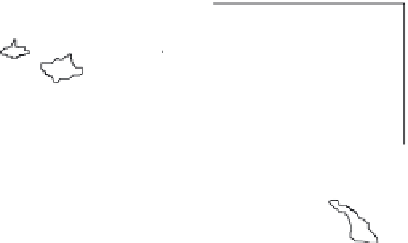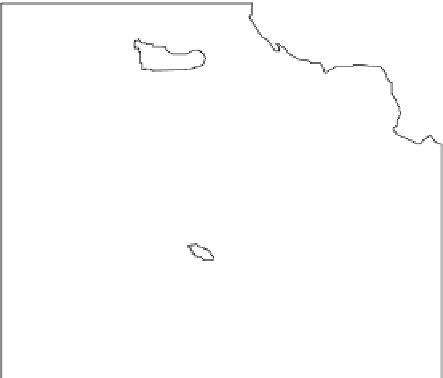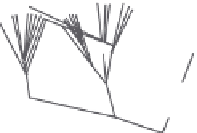Environmental Engineering Reference
In-Depth Information
Fig. 5.12
Genetic
relationship tree of
individuals of fox
subspecies inhabiting
different Channel
Islands and the
Californian mainland.
In this branching
display, individuals that
are genetically very
similar branch close
together. Populations
on the southern islands
are distinct from those
on the northern islands,
while the populations
of adjacent islands
contain individuals that
are more similar to each
other. (After Wayne &
Morin, 2004, based on
Aguilar et al., 2004.)
San
Miguel
Santa
Rosa
Santa Cruz
Los Angeles
California
Santa
Catalina
San Nicolas
San
Clemente
of choices and need to demonstrate some courage in giving up on hopeless cases,
and prioritizing those species where something can be done within the limits of
available resources.
Whenever economics and ecology are considered together, as they have to be
when a change in human behavior is required for the sake of sustainability, there
is inevitably a sociopolitical dimension too. In Section 5.6.1, I discuss a case where
the environmental cost of novel agrotechnology depends not only on the ecology of
affected species but also on the way farmers behave in the new situation.
Whether people are prepared to change their behavior depends on their percep-
tions of the costs and benefi ts involved. Until recently, the value of conserving
biodiversity hardly fi gured in the equation and, even now, the public, and the gov-
ernments that serve them, are often unaware of the gains to be made by taking care
of the natural world. When is public education needed to make clear the costs and
benefi ts of action (or in act ion)? How should government take account of questions
of sustainable behavior - bottom-up, by encouraging different sector groups to work
out sustainable strategies together or, top-down, by regulating behavior through
new laws? There are no easy answers. In Section 5.6.2, I return to the plight of India's
vultures. You will see from a population viability analysis that the decline of the
species, and of the immensely valuable (but free) ecosystem services it performs, is
linked to a pharmaceutical product. In this case, government has acted to ban its
use.
5.6.1
Genetically
modifi ed crops -
larking about with
farmland biodiversity
The progressive intensifi cation of agriculture, and particularly increases in mecha-
nization, fi eld size and pesticide use, have been linked to declines in farmland bio-
diversity. Genetic modifi cation (GM) of crops is the most recent of these pressures
and Watkinson et al. (2000) ask how genetic modifi cation of sugar beet (
Beta vul-
garis
) might impact on birds that depend on the seeds of cropland weeds. This is
not a traditional population viability analysis. Rather, Watkinson's team combines
the correlation approach described in Section 5.2 (correlating bird density with the
seeds upon which they feed) with a detailed knowledge of the behavior of individual
birds. The fi nal ingredient is to test the consequence of assumptions about the way
farmers will behave in relation to the new technology.






































Search WWH ::

Custom Search